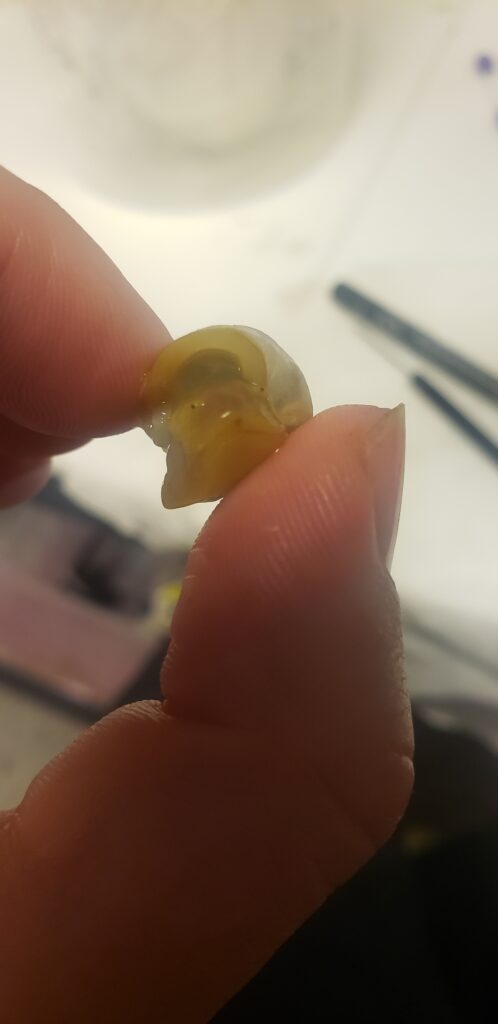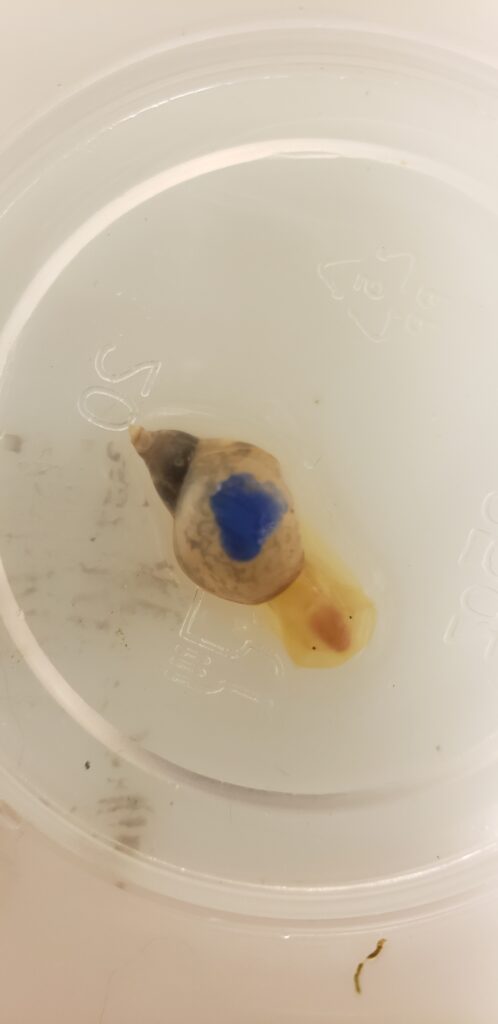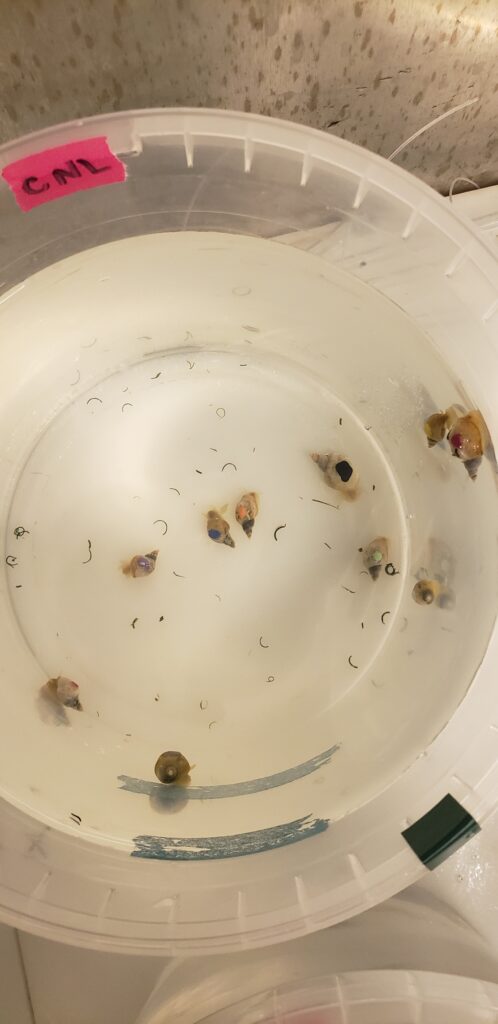Animal identification is a major barrier in designing large scale experiments. Especially when looking at things like growth or behaviour, we have to be able to continuously identify each individual throughout the experiment.
Many tools have been developed for this – things like tagging of fish gills or lobsters, microchip identifiers, injected fluorescent elastomer tags; however, each of these has a (sometimes hefty) price tag and using them can be quite a lengthy process; when you want to do experiments with a high turnover, buying and tagging hundreds of individuals each month is simply not always feasible.
This is where I found myself in designing a recent project using pond snails. I needed to constantly be able to identify each individual, and FAST! This was for a project to be carried out by an undergraduate student I was mentoring and we needed to be able to rapidly identify each snail to record their positioning and behavioural state every two minutes. With ten snails at a time, this type of experiment felt like a scientific version of Whack-A-Mole…you see the snail one second and they are gone the next!
Using a visual identifier was key, and having it be large enough to be seen at any time and from most angles was imperative. Since snails could (and would) hide in their shells, anything that required soft-tissue like injectable fluorescents was out of the question. Thankfully, snails are equipped with their own canvas: their shell! The question then became: how do we paint it?

Paint seemed like the obvious choice, followed by any type of ink or pen or marker that said “permanent” on it. It quickly became apparent that when the classification of “permanent” was granted to these products, their product testing did not include applying it to a calcium carbonate snail shell and allowing those snails to then continue their lives constantly submerged underwater.
No mater how much we dried their shells prior to application, nothing was working.
Daily life continued, as it always does, and I searched for durable colour – exterior house paint? Probably toxic and would take too long to dry. Dyed aquarium sealant? Too heavy and would interfere with normal movement.

Then I remembered colouring with my friend’s four-year old who had just discovered the concept of nail polish. I recalled the bright green on my nails that lingered until I surrendered to purchasing nail polish remover. If nail polish can survive dozens of daily handwashes, countless showers, and all that daily life throws at us, it should be able to survive on some snails, right? Right.
We headed straight to the nearest store and quickly learned that it is not quite as simple as “pick up some nail polish” – there was nail lacquer, nail colour, gel colour, base coats, top coats, glosses, and many other words that have since been lost from my vocabulary.
We tried them all. As long as we applied them to a dry shell, they all stuck well! It was only after we gained confidence from these preliminary trials and began a large-scale experiment that we were thrown a curveball. Despite the preliminary trial snails rubbing and bumping their shells against surfaces with nearly every motion, the experimental snails (housed in plastic rather than glass) found a way to peel the nail polish off overnight. We started over and sealed the nail polish edges with superglue and we were ready to go!
